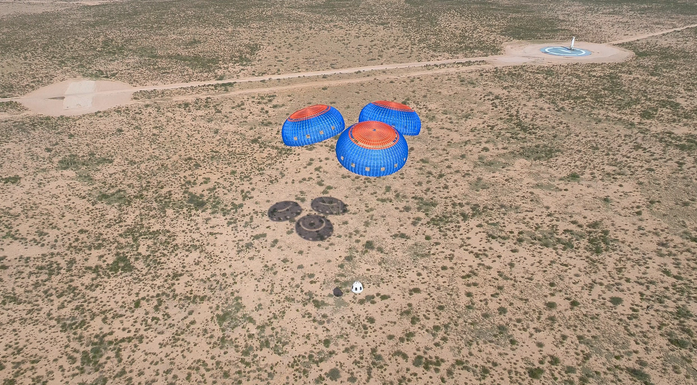Blue Origin's New Shepard flew for the ninth time on 18th July 2018. During this mission, known as Mission 9 (M9), the escape motor was fired shortly after booster separation.
Blue Origin's New Shepard flew for the ninth time on 18th July 2018. During this mission, known as Mission 9 (M9), the escape motor was fired shortly after booster separation.
New Shepard's “full envelope” escape system is built around a solid rocket motor that provides 70,000lbs of thrust in a two-second burn, pushing the capsule away from the launcher at any point from the time passengers are installed in their seats until the capsule separates from the booster near apogee.
The successful test was part of ongoing trials of the re-usable New Shepard rocket and a prototype crew capsule designed to carry six human passengers on brief flights above the internationally-recognized 100km boundary of space.
The recent test is the latest in a series of escape system tests. In October of 2012, the company simulated a booster failure on the launch pad and had a successful escape. In October of 2016, it simulated a booster failure in-flight at Max Q, the most physically strenuous point in the flight for the rocket, and had a completely successful escape of the capsule.
This test on M9 allowed engineers to finally characterise escape motor performance in the near-vacuum of space and guarantee that astronauts could make a safe return in any phase of flight.
Also on M9, New Shepard carried science and research payloads from commercial companies, universities and space agencies, including NASA's Suborbital Flight Experiment Monitor-2 (SFEM-2) sensor package to help measure critical data such as acceleration, pressure, temperature, humidity, carbon dioxide levels and acoustic levels within a suborbital vehicle in flight.

